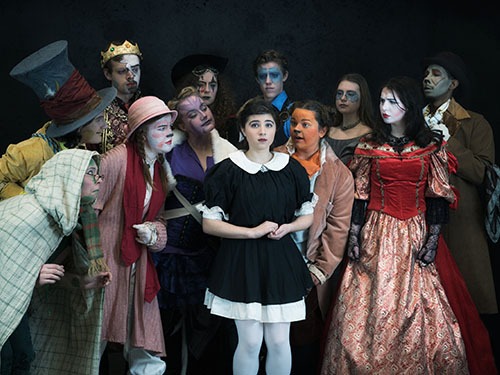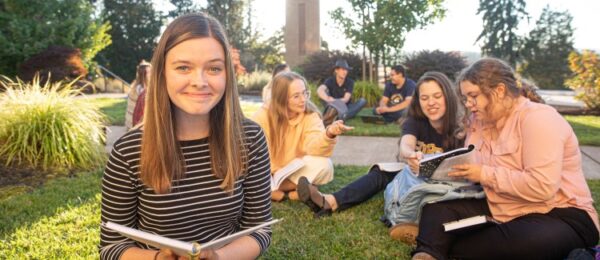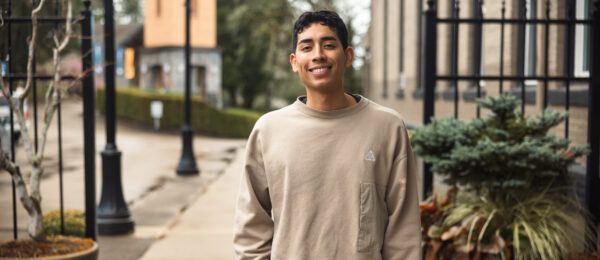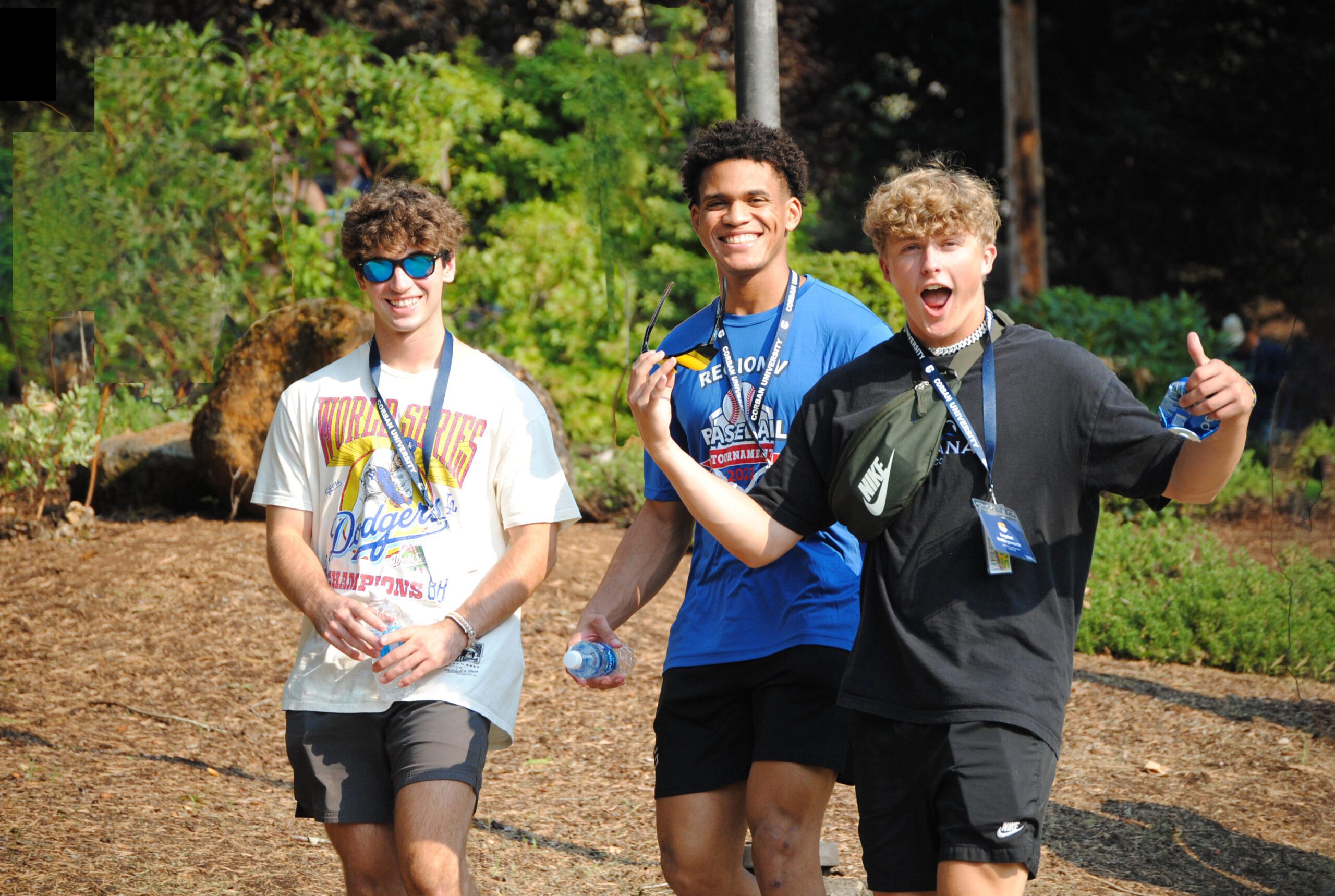Corban Theatre’s “Alice” Promises to Capture and Delight

“It’s a good thing he’s mad, or else I should wonder what he means.”
The March Hare (John Crocker) is speaking of the Mad Hatter (Luke Douglas), but he may as well be describing how an audience often feels when faced with the traditional absurdity of “Alice in Wonderland.”
But Rachel Ost’s “Alice,” which opened for its premiere performance on March 8, leaves the audience with something more than nonsensical absurdity. Beneath the Mad Hatter’s neuroticism, the Queen’s rage (Gabriela Elkins), and the Cheshire Cat’s aloofness and riddles (Maddee Hawken), lies a purpose, a meaning, a quest: a quest for identity.
Curtains glide open to reveal an overgrown metal gate set in a rosy hedge. The setting is a garden, but one soon realizes it’s not a peaceful garden. Rather, it’s a hedge maze, where characters are in continuous motion.
Painted hedge set pieces move independently of one another and glide eerily across the stage between scenes, creating endless maze-like configurations. Some paths close, others open. The only set pieces that remain stationary are an overgrown stone well and a little footbridge—and even these suggest travel: over and across, up and down.
The audience is left wondering where, exactly, Alice has found herself. It isn’t Wonderland, although it is certainly a colorful world. Each character embodies a specific color palette, and the costuming and makeup alone make this a must-see show.
The cautious, logical March Hare wears a sensible brown; the energetic Dormouse (Rachel Stadeli) is an excitable orange, and the curmudgeonly Mock Turtle wears, of course, green. The bright-eyed, feverishly neurotic Mad Hatter, ironically the most purposeful character of them all, is a mustard yellow (not unlike the color of a certain wallpaper).
Only Alice (Heather Bellinger), dressed in black and white, appears out of place.
Alice’s arrival seems to disrupt the lives of everyone she meets, and neither Alice nor the other characters know why. Is it because she lacks a color? Or because she’s a human in a world of talking animals? (“What is an Alice?” the inhabitances of the hedge maze frequently ask one another). Or is it because she doesn’t have a hat?
We’ll let you find out for yourself. We’ll also let you discover what it means to see the world “through Cat’s eyes,” whether cats and caterpillars are actually related, and why the Mad Hatter cannot rest until everyone is properly and suitably “hatted.”
Along the way, you’ll enjoy Maddee Hawken’s graceful, cunning cat-ness, Rebecca Weed’s turtlish dire languor, and Katie Garvin’s rabbit-like timid desperation.
And what can we say of Alice? Heather Bellinger brings her finest performance yet to this role. Almost always on stage, Heather consistently delights the audience with her childlike—but never childish—rendition. Her range of demeanors and emotions allows Alice to be simultaneously cheerful and afraid, sheepish and strong, sweet and resolute.
The characters in “Alice” may not be in Wonderland, but the audience certainly is, as they’re whisked away for an evening by an alluring set, vibrant costuming and makeup, and lively action scenes (choreographed by Fight Captain Joe Kraft).
Is Rachel’s “Alice” a bit absurd? Absolutely. Is it full of quick wit and riddles that go nowhere? Of course. But Rachel has also created a world of growth, a world where people—and animals—can change, and where errors can be set right.
It’s not too late to buy a ticket and see “Alice” for yourself.
“Onward to the field, to the mayhem, to the game!”
Written by Amelia Kaspari, Staff Writer









